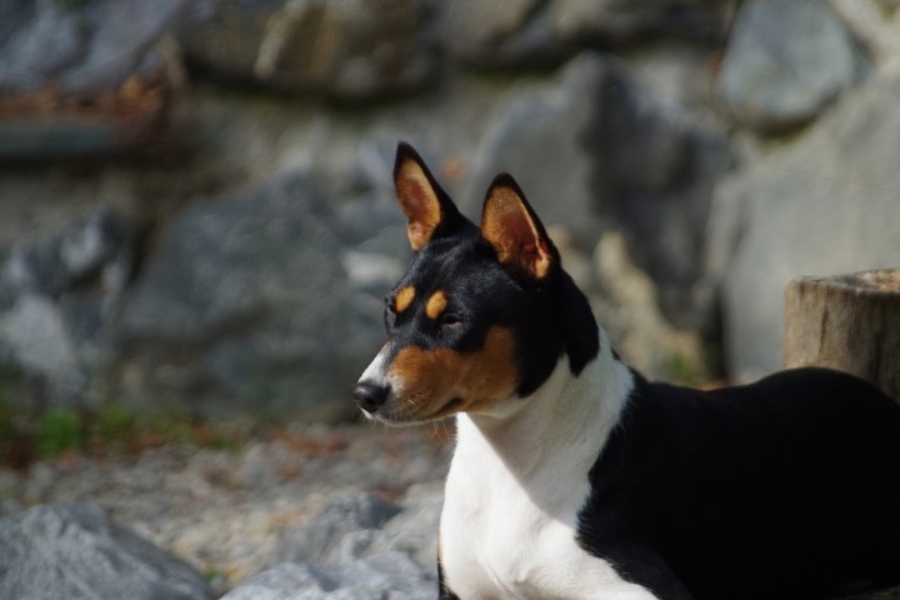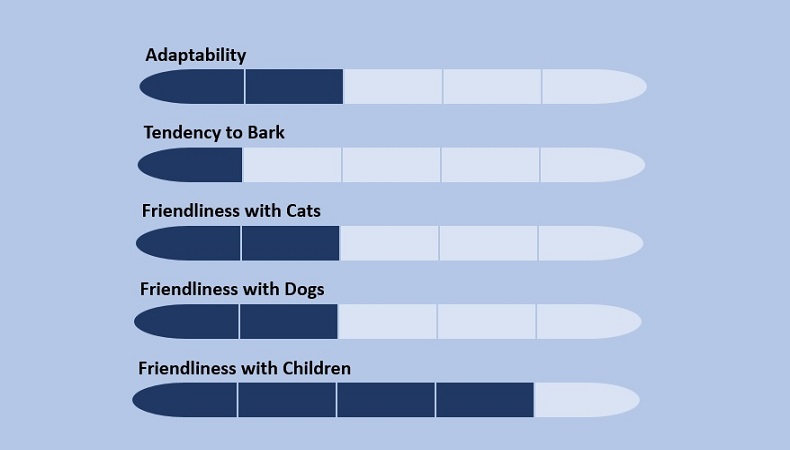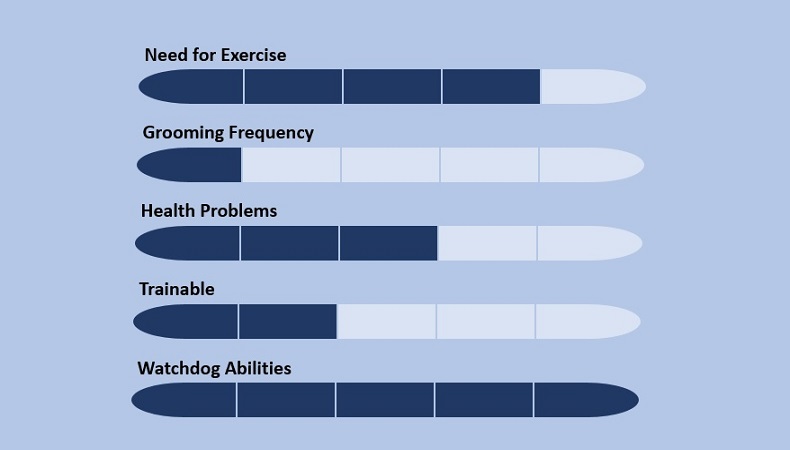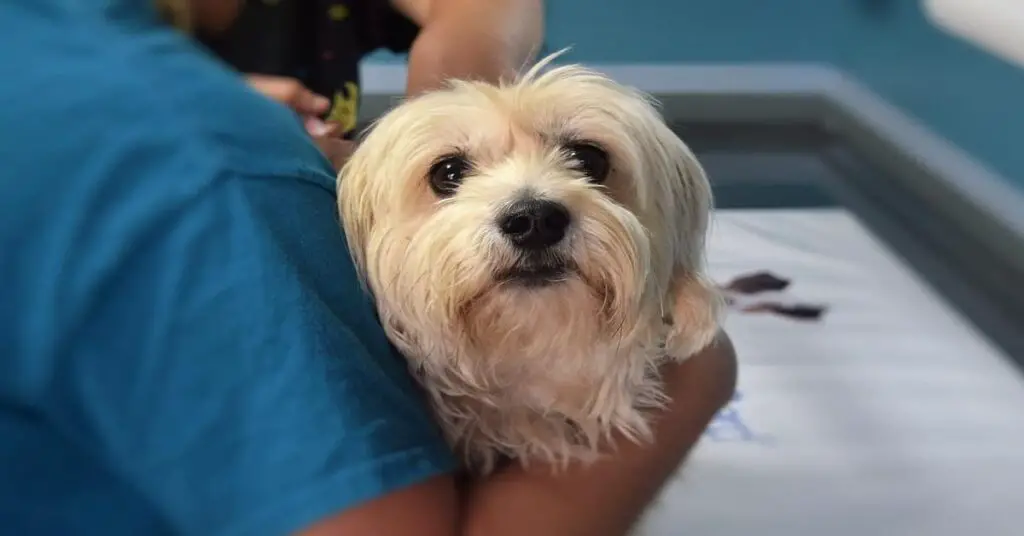BASENJI
Also Know as:
Ango Angari, Zande Dog, African Bush Dog, African Barkless Dog, Congo Dog, Congo Terrier
Origin: Congo
Type: Pure Breed
Height: 38 to 43 inches
Weight: 20 to 26 pounds
Life Expectancy: 12 to 15 years
BASENJI TEMPERAMENT
The Basenji is not a dog that would make lots of noise, they don’t like barking, but from time to time, you will get a single “woof” from them. They would whine and squeal to get attention. They even have a unique noise called a yodel or a baroo which they would make when they need something urgently.
Naturally, the Basenji dog does not like water. In fact, they go to extreme lengths to make sure not even a single drop of water touches their body. The Basenji is also a very intelligent dog and a quick learner. This intelligence makes them very inquisitive and their quest for something which piques their curiosity is the only time in which they can forget their disdain for water, but even that is temporary.
The Basenji likes his independence and does things mostly out of inquisitiveness or curiosity. This part of his nature becomes a problem especially when it comes to obedience training. Also naturally mischievous and having a sense of humor, the Basenji believes he or she can outwit anybody including their owners. When not living in a controlled environment, you will find them trying to test the limits of their environment.
They are also not patient dogs, very fast when running and good climbers. They love a good chase and are fearless in their approach to challenges. A very good attribute of a Basenji is their ability to bond with their owners.
.
You can get Free Dog Training Videos Here
.
BASENJI PHYSICAL APPEARANCE
Looking at a Basenji, the first impression would be that they are small, short-haired dogs having erect ears, graceful looking neck, and curled tails. Adding all these features together, the Basenji is an elegant looking dog, you can say that they bear a resemblance to a miniature deer. The Basenji’s eye is almond-shaped and their foreheads have a wrinkle especially the young ones, giving them a squinting, serious look.
The Basenji weighs between twenty to twenty-six pounds, with the male weighing between twenty-two to twenty-six pounds while the female weighs between twenty to twenty-five pounds. In height, they can stand up to 17 inches with the male standing between sixteen to seventeen inches while the female stands between fifteen to sixteen inches tall. Very athletic dogs and deceivingly powerful when looking at them from the perspective of size. They have a graceful movement and a confident gait almost like that of a horse trotting. They can take off at high speed in an instance.
In color, they come in these ranges: Red and White, Black and White, Black Tan and White, and lastly Brindle and White. Although these are the officially recognized colors, you would find them with more color variations back in their country of origin Congo.
BASENJI CHARACTERISTICS
BASENJI CARE
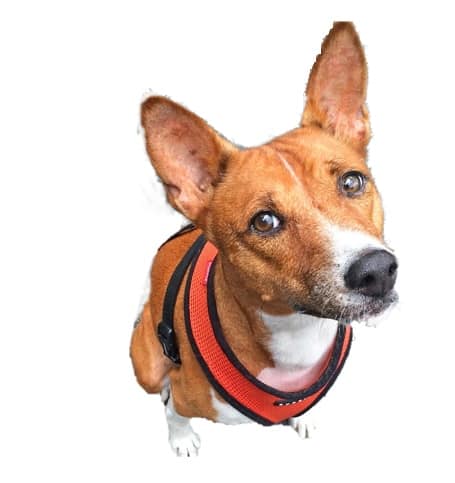
BASENJI HISTORY
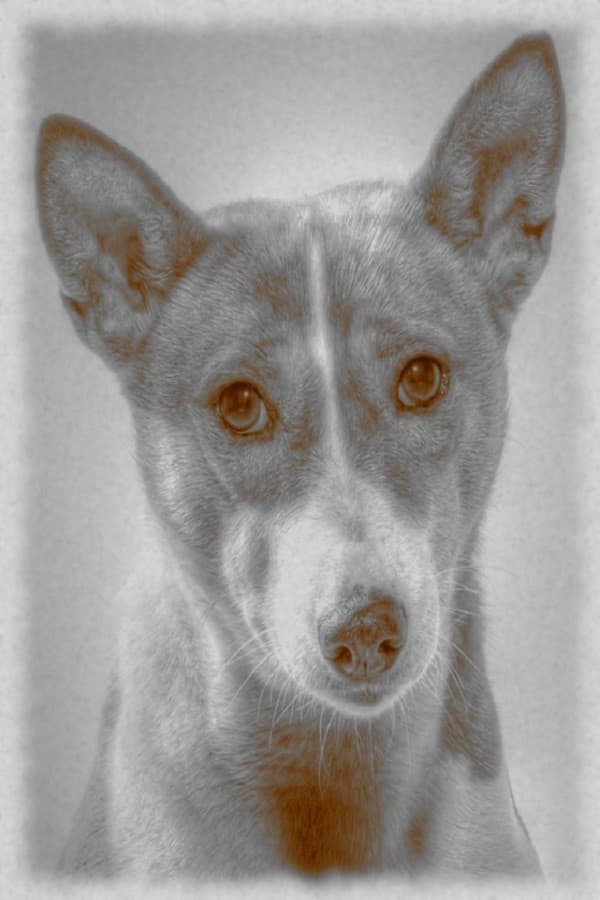
One of the oldest dog breeds in existence today. They originated from Africa and were very much respected there. Proof abounds as to how ancient the Basenji is as their pictures and statues can be seen all over ancient Egypt. From the tombs of Egyptian Pharaohs to big sculptured works. You will see the Basenji usually sitting at the feet of the pharaoh with their tails tightly curled and their ears standing straight having the perfect resemblance of what they still look like today.
The Basenji was thought to be a lost breed to civilization, but it wasn’t until 1895 that they were rediscovered in the Congo in Africa. At the time of their discovery, they were highly prized dogs by the locals in that region. This was because they exhibited high courage, intelligence, and most importantly speed and silence when going on a hunt. This made them very valuable to the hunters in that region as they were able to capture wild games by chasing them into the traps mostly made of nets for their hunting masters. A particular tribe the Azande and Mangbetu in the northeastern part of Congo described the Basenji as “embwa na bwasenji” in the local dialect of the language of Lingala, this translated into English means “dogs from long ago” or “dogs from when we were wild”. While hunting for their prey, the Basenji has a habit of jumping up very high and landing back on the same spot. This was the way they scouted the area for their prey and were able to direct the hunters towards the prey. This lead to them being given another local name “M’bwa m’kube M’bwa wamwitu” translated in English as “jumping up and down dog”.
After they were discovered in the Congo, many of the Basenji were brought to England but were unable to survive in their new habitat as they all died of one disease or the other. This went on till 1930, when the first stock of breed survived, from the surviving stock, they were taken to the United States and then spread across the western world from here.
In 1943, they were officially recognized by the American Kennel Club as a standard breed. They got more popular when they were used as the main character in the popular 1950’s book and movie, “Goodbye, My Lady”. More Basenji dogs were imported from Africa in the 1980s and more in the 1990s at the request of the Basenji Club of America, thus increasing their gene pool and adding the brindle color as a recognized breed feature.

Hi, I am Charles Nwankwo Editor-in-Chief, Mydoggything.com. Gleaning from Professional Dog Trainers, behaviorist, Registered Veterinarians, and Breeders. We are passionate about making dog care easy for you. My job is to make sure that you get the best-updated dog care information to understand and take care of your dog or dogs.
